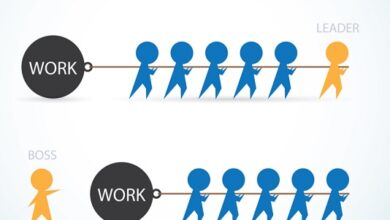Principles of lean startup origin its characteristics and advantages
Lean startup
Here we will provide you the details about Principles of lean startup origin its characteristics and advantages.
The word “lean” can be translated as “lean”, therefore, lean startup means, in a free translation, lean startup . This concept refers to an administration focused on identifying and eliminating sources of waste in production processes , but without losing the quality of the final product.
The methodology is closely linked to the environment of technology startups , but it can be applied to any type of company, including large ones. Its biggest differential is the agility of the processes to launch a product with minimal feasibility as quickly as possible and only then make the necessary adjustments to reach the ideal product.
What is the origin of the methodology?
The concept was introduced by author Eric Ries, in The Lean Startup, based on his own experiences as an entrepreneur, consultant and startup creator .
After working for months on a software development project with $40 million funding and over 200 employees, Ries saw his project fail for lack of popularity , which cost him enormous economic, time and resource losses.
After the experience, the entrepreneur sought references in the Japanese philosophy of Lean Manufacturing to propose a new creation model called Lean Startup. Since then, its methodology focused on eliminating unnecessary expenses has been widely used to think and accelerate companies around the world.
What are its characteristics?
The term lean startup encompasses a set of concepts, methodologies and processes that guide the entrepreneur to validate or discard hypotheses about their product or market. The methodology is based on a combination of some important principles, as we will see below.
1-feedback loop
The cycle feedback is one of the main concepts of a lean startup. It is divided into three phases: build, measure and learn . Therefore, it is necessary for the business to design and build a product quickly, measure its effectiveness in the market and learn from this experience.
In other words, the cycle turns ideas into products , measures customer reactions and behavior, and then decides whether the idea should be taken forward or discarded.
2-Minimum Viable Product (MVP)
The minimum viable product is the minimum, trial version of a new product for it to be released. Through it, it is possible to seek more information and understand consumer expectations and needs. The purpose of this release is to minimize efforts and save resources until you understand exactly what your end customer wants.
3-Continuous Deploy
Deploy is a term widely used by software developers which means to deploy, make available for use or even put on air . Thus, the idea behind lean startups is that the completion of the construction of a new resource and its availability to the public is done in a short period of time, so that customers can evaluate it as soon as possible.
4-A/B test
Another principle of the methodology is the availability of A/B tests. Thus, when possible, the idea is to offer more than one version of the product on the market to gather feedback and understand how customers react to each model. From this reaction, the organization is able to measure the preferences of its audience.
5-Pivot
We call pivoting the complete change in the course of a product . Therefore, this is when the company realizes that it is not worth it to continue investing in the initial idea and needs to change the course of the strategy. The advantage of lean startup is that, using the methodology, it is possible to see this need earlier , avoiding waste of time and money.
So, when the organization understands that it’s time to pivot, it starts considering a new MVP and starts the testing and release process again.
Principles of Lean Startup
1– Entrepreneurs are everywhere
You don’t have to work in a garage to be a startup entrepreneur, you don’t have to be in your 20s or be a super nerd either. The concept of entrepreneurship in Lean Startup is related to the creation of new products and services under conditions of extreme uncertainty.
Without being restricted by company size, sector of the economy, much less physical and behavioral characteristics. Therefore, entrepreneurs are everywhere.
The stereotypical vision of an entrepreneur varies from the brilliant college student to the motivated scientist, but in reality, entrepreneurs are everywhere and come from all walks of life. By definition, an entrepreneur is a person who organizes and operates a business, sometimes – but not always – assuming high levels of risk to do so. Entrepreneurs are not restricted to high-end tech or biotech startups.
The importance of this point cannot be overlooked, although it seems simple. Opportunities for startups abound in every industry and every region. When you’re looking to fund a startup, you don’t need to be confined to a narrow range of opportunities. Find an industry that intrigues you and focus your attention on startups in that industry.
2 – Entrepreneurship is administration
A startup is not just a product, it is an institution that must be managed. However, it lives in a context of extreme uncertainty where traditional management tools do not work. Therefore, a new type of management focused on the context of extreme uncertainty is needed.
Returning to the definition of entrepreneur, we see that a central concept is to operate a business. The definition does not include bright ideas or extravagant consumption habits or even a certain degree of coolness. It is a matter of management, which means taking advantage of available resources to meet goals or, at the very least, providing the best possible result under certain circumstances.
Management is discipline and creation of processes that help the organization to achieve its goals.
To make a startup succeed, the entrepreneur needs to impose processes and disciplines on the organization. Management means making good decisions faster, even when based on limited information; it’s about getting the best out of a team.
Sometimes a manager is a coach and sometimes a manager is a dictator or a friend – or an opponent. A manager manages and makes things happen.
This is a fundamentally different view of entrepreneurs, who often show trends and go on expensive ego trips, leaving reality behind. Investing in a lean startup means your money won’t be wasted on some of the excesses and mistakes made by entrepreneurs like leaders who have failed.
3 – Validated Learning
Startups need to learn how to build a sustainable business. However, this learning must not be random, it must be scientifically validated with the execution of experiments where the entrepreneur can test every element of his business model.
Ideally, startups should run tests to test parts of their products, in order to scientifically pinpoint what works and what doesn’t. Since it is a comparatively smaller number of investors that you will target, it is difficult to carry out experiments in the proper sense.
That said, it’s important for business owners to understand the various processes involved, test different versions, and pinpoint what’s working best. A learning mindset is very important.
4 – Build – Measure – Learn
The main activities of a startup are: turning ideas into products, measuring how consumers react and learning if it’s a case of change or persevere. All efforts of a successful startup must be aimed at accelerating this loop.
Your potential investor is your market, while your main selling point is your product. Most entrepreneurs consider the fundraising procedure to be a progressive set of steps.
If you’re really into the iterative mindset, your MVP deck should look better after every performance.
Creating an innovation process is key to the MVP concept and the whole lean startup idea. It involves the product learning cycle: Build – Measure – Learn. The process starts with the first prototypes that are shown and tested with various customers.
Customers provide their feedback on what they like, dislike or what they need to add before they are willing to buy the product. Initialization measures the product’s current features for acceptability to your target market.
The development team takes that learning, adds features that meet the identified need, and repeats the process until a design that meets the need emerges without adding unnecessary costs, extended development cycles, or unwanted features.
5 – Accounting for innovation
To improve results and hold entrepreneurs accountable, startups need to pay attention to some less interesting things, such as measuring progress, setting milestones, and prioritizing work. This requires a new type of accounting designed for startups.
How does a lean startup work?
Now that you know the concept of lean startup and its principles, let’s better understand how this methodology works in practice. The first step that needs to be taken in is that a startup is more than just a product , it is a complete company that needs good management .
One of the problems in this innovation market is that, often, entrepreneurs are stagnant, spending time and money on product development , not knowing if the solution will really satisfy the pains and desires of the consumer. This is because these entrepreneurs try to come up with a full version of the product before any launch.
In this sense, lean startups come against this idea. This is because, to apply the method, the entrepreneur must be aware that, even doing research, all he has are just hypotheses that need proof.
So instead of creating a complete business plan for his product, he should create simpler diagrams and start testing with MVP as soon as possible . For this type of test, the concept of customer development or customer development is used.
Thus, the company must talk to potential users, buyers, partners and extract their opinions about the business model , product characteristics, prices, distribution channels, among other attributes.
After extracting all the necessary information, the lean startup must adopt an agile development , in which there is no loss of time or resources and the product is developed in an interactive and incremental way.
In short, the concept of lean startup revolves around the interaction with customers , in order to validate hypotheses and improvements throughout the process, creating more efficient products that really are what the public is looking for.
What are the advantages of the model?
Betting on a lean startup can bring excellent benefits to the business, generating very interesting results. Below, we explain some of the main advantages of the model.
1-Greater productivity
One of the main benefits of this methodology is that it allows the entrepreneur to focus on what will really give results and act in a more agile and direct way. Thus, it is possible to act more efficiently and ensure greater business productivity .
2-Closer relationship with customers
Using the feedback loop, it is possible to get to know your target audience better , understand their demands, motivations and create a close bond. This will make for a greater connection between the company and consumers, improving loyalty and boosting word-of-mouth marketing.
3-Operation cost reduction
By eliminating wasted resources and time, the company is able to reduce its costs and contribute to a more sustainable development of the business . In this way, the organization minimizes expenses and increases its profit potential.




